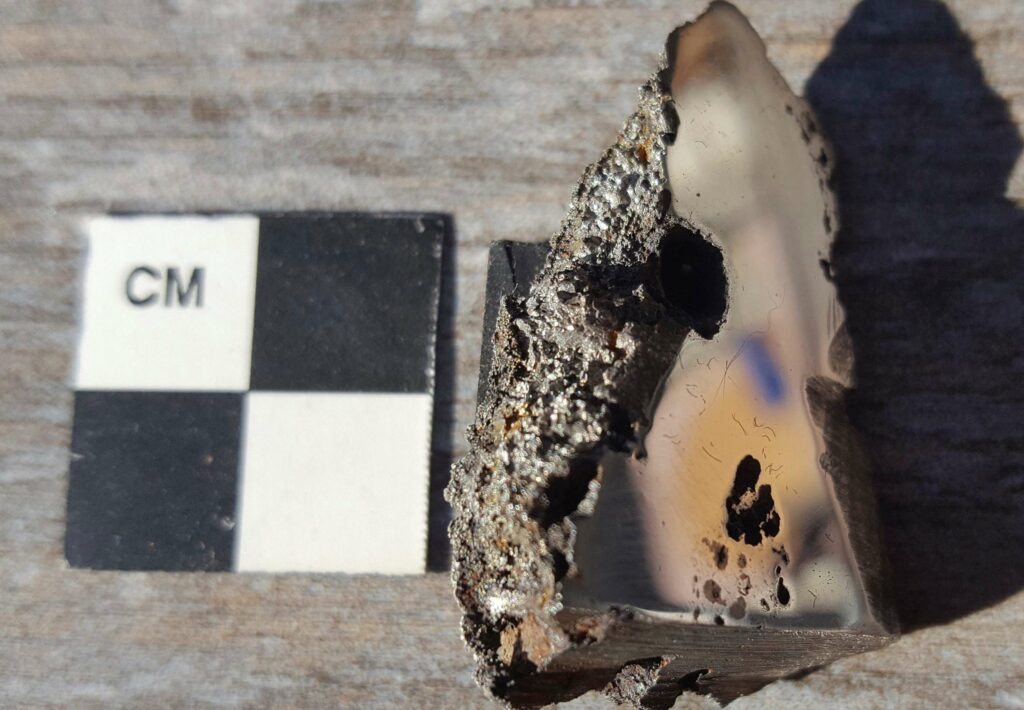The discovery could help geologists to uncover conditions deep inside growing planets

Two new minerals, never seen before in nature, have been recently discovered inside a meteorite.
The space rock was identified near the El Ali district of Somalia in 2020, but locals have known of it for much longer. They call the stone ‘Nightfall’ in folk songs and dances that go back seven generations. It is huge, weighing more than 15 tonnes, making it the ninth-largest meteorite ever discovered, and is predominantly made of iron and nickel.
Shortly after its discovery, a 70g slice was sent to Chris Herd at the University of Alberta for analysis. Herd soon noticed something unusual in the data, which was identified as a pair of new minerals.
“Whenever you find a new mineral, it means that the geological conditions, the chemistry of the rock, was different to what’s been found before,” says Herd. “That’s what makes this exciting.”
As iron meteorites are believed to originate in the cores of infant planets destroyed before becoming fully-fledged worlds, these minerals offer a critical window into our Solar System’s growth. If you know the conditions necessary to form these minerals, then it’s possible to tease out the geological history and conditions in which the asteroid formed.
Fortunately, the team had a head start in this analysis, as the minerals have previously been created synthetically in a laboratory. This also helped their rapid identification, as they could be matched to their human-made counterparts.
Now they have been found in nature, the minerals have been named elaliite, after the meteorite and elkinstantonite, after Lindy Elkins-Tanton, a prominent researcher in the field of planetary cores.
There are signs of a potential third new mineral in the rock, but it is still under analysis. Herd hopes more new minerals could be threaded throughout the meteorite, but finding them may prove difficult. The meteorite appears to have been moved to find a buyer and it’s uncertain if any more samples will be available for scientific study – whether for planetary science or other research.
“Whenever there’s a new material that’s known, material scientists are interested too because of the potential uses in a wide range of things in society,” said Herd. www.ualberta.ca/museums